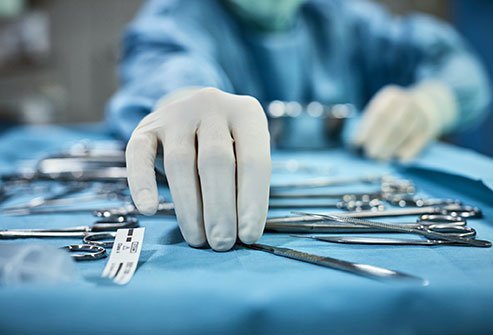What are inverted nipples?

Inverted nipples don’t cause harm to your body, so treatment is not necessary. If the appearance of inverted nipples bothers you, there are options that don’t involve surgery such as eversion devices and injection treatments.
You may not be able to tell if you have inverted nipples just by looking at them. You can complete a “pinch test” by gently squeezing the areola about an inch from your nipple. Your nipple should become erect. If not, it is considered flat. If your nipple retracts, it is an inverted nipple.
Additionally, if your nipples become erect when it is cold or with stimulation, they are not considered inverted. Truly inverted nipples will not respond to these kinds of stimuli. It is important to note that only one nipple may be inverted, while the other one can be normal.
Still, you may be concerned with the appearance of your nipples if they look inverted. In many cases, nipples are dimpled. This means that they look flat or inverted but will respond and become erect if it is cold or there is stimulation.
What causes inverted nipples?
Inverted nipples often occur naturally. Babies are often born with inverted nipples. Nipples may also be inverted as a result of:
Who can have inverted nipples?
Anyone can have inverted nipples, although they are more common in women. Since inverted nipples are considered a genetic trait, you are more likely to have them if someone else in your family already does.
How do you know if you have inverted nipples?
If you suspect that you have inverted nipples, begin paying attention to them when it is cold. Do they respond by becoming erect? Use the pinch test to see if your nipples stick out or collapse in. If you have questions about your nipples, talk to your doctor for a formal diagnosis.
How do medical professionals diagnose inverted nipples?
Inverted nipples are usually identified by pediatricians during well checks for babies or as your child enters puberty. Visual identification is sufficient for diagnosis, although a doctor may perform the “pinch test” mentioned above to see how the nipple responds.
Nipples that are inverted from birth are not a concern. However, if you or your child develops inverted nipples after puberty, cancer may be a concern.

QUESTION
Newborn babies don’t sleep very much. See Answer
What are treatments for inverted nipples?
Since inverted nipples don’t cause harm to your body, treatment is not necessary. If the appearance of your nipples bothers you, there are options that don’t involve surgery.
Eversion devices
Since the most common reason for women to address inverted nipples is breastfeeding, most at-home remedies are geared toward breastfeeding. Still, they can help even if you are not lactating.
These remedies include:
- Breast Pump or Modified Syringe — These devices use suction to pull your nipple outward. While most pumps are designed to extract milk from the breast, using a pump on a low setting can help to improve the look of inverted nipples.
- Nipple Stimulation — Similar to the pinch test, you pinch your areola about one inch back and roll your nipple between your thumb and finger.
- Reverse Pressure — This method is the opposite of nipple stimulation. Instead of pinching the area around your nipple out, you push back the base of the nipple toward the chest wall to push other tissue and fluid back toward your chest.
Injection treatment
This treatment is very similar to getting Botox fillers on your face and lips. Less invasive than surgery, hyaluronic acid fillers are injected into the skin behind the nipples to help them stick out more. Though research finds this treatment effective, it does not work all of the time.
Latest Women’s Health News
Daily Health News
Trending on MedicineNet
What risks are associated with correcting inverted nipples?
All treatments pose the risk of negative side effects, so talk to your doctor about the best way to treat your inverted nipples without surgery. At-home remedies like a breast pump can cause damage if the suction is too strong or devices aren’t used properly.
In the case of injectable fillers, you’ll want to research doctors to find someone who has the correct certifications for administering injections for your inverted nipples correction. Similarly, you need to ask questions and make sure they are using approved fillers.
Do inverted nipples make breastfeeding difficult?
Breastfeeding offers many health benefits for a mother and her child. Research shows that breast milk lowers a baby’s risk of developing asthma, obesity, type 2 diabetes, and even leukemia during childhood. Breastfeeding also lowers a mother’s risk of depression, improves sleep, and aids in overcoming past adversity.
However, inverted nipples can make it difficult for some mothers to breastfeed their children. While most types of inverted nipples do not cause problems with breastfeeding, some inverted nipples can create issues for mothers and babies including:
- Problems achieving a deep latch
- Difficulties finding a comfortable breastfeeding position
- Sore nipples
- Skin chapping, cracks, or blisters
Recognizing the signs of breastfeeding difficulty due to inverted nipples helps you determine how to best treat the nursing issue and ensure your children get the breast milk they need.
What are signs of breastfeeding difficulty with inverted nipples?
While some mothers have no problem breastfeeding with inverted nipples, others may experience difficulties nursing. Possible issues include:
Difficulty getting your baby to latch on
An inverted nipple can make it difficult for an infant to latch onto a breast while nursing. Problems with achieving a deep latch can make it difficult for a baby to receive milk. Infants can become upset when breastfeeding is not successful, requiring mothers to calm their babies down before trying again.
Problems finding a comfortable breastfeeding position
Breastfeeding with inverted nipples can affect the position that is most comfortable for you and your baby while nursing, making breastfeeding difficult.
Nipple soreness
As a baby’s suckling causes an inverted nipple to be drawn out, some mothers experience nipple soreness for the first 2 weeks of nursing, and possibly longer. In rare circumstances, the nipples do not stretch but remain tight, causing stress points that can lead to cracks or blisters. If your nipples retract after breastfeeding, the skin can remain moist and become chapped.

SLIDESHOW
Parenting Guide: Healthy Eating for Kids See Slideshow
What are the types of inverted nipples?
Different types of inverted nipples can cause different degrees of difficulty with breastfeeding. Types of inverted nipples include:
Dimpled nipples
Only part of the nipple protrudes with a dimpled nipple. You can pull the nipple out, but it won’t remain erect.
Unilateral nipples
Some women have an inverted nipple on one breast and a protruding nipple on the other.
Slightly inverted nipples
Inverted nipples classified as slight only have a minor degree of inversion. Babies with a normal suck usually have no problem bringing the nipple out and receiving milk. However, premature babies or babies with a weak suck may have more difficulty at first.
Moderately to severely inverted nipples
These nipples retract so deeply when the areola is compressed that they may be at a level with or beneath the areola. This makes it more difficult for babies to receive breast milk.
What are treatment options for breastfeeding difficulties due to inverted nipples?
You can use several breastfeeding products to help your baby nurse, including:
- Breast shells: These plastic shells are worn inside your bra and place pressure on the tissue around your nipple to make your inverted nipple protrude and make breastfeeding easier.
- Breast pump: You can use a breast pump or modified syringe to pull and draw out your inverted nipples right before breastfeeding.
- Nipple shield: This is a silicon nipple placed over your nipple during breastfeeding that provides your baby with the stimulation to trigger a suck reflex. However, you should only use nipple shields under the guidance of a lactation professional to prevent any problems.
In addition to breastfeeding devices, you may find stimulating your nipples or holding your baby in a more comfortable breastfeeding position makes nursing easier. If nipple soreness becomes a persistent issue, your doctor or lactation consultant can provide you with additional resources for reducing discomfort and enabling you to breastfeed successfully.
Subscribe to MedicineNet’s Pregnancy & Newborns Newsletter
By clicking “Submit,” I agree to the MedicineNet Terms and Conditions and Privacy Policy. I also agree to receive emails from MedicineNet and I understand that I may opt out of MedicineNet subscriptions at any time.
Medically Reviewed on 5/6/2022
References
Food and Drug Administration: “FDA approved dermal fillers.”
John Hopkins Medicine: “Flat and inverted nipples.”
La Leche League International: “Flat and inverted nipples.”
National Center for Biotechnology Information: “Inverted nipples.”
Office on Women’s Health: “Making the decision to breastfeed.”
La Leche League GB: “Inverted Nipples.”
La Leche League International: “Inverted and Flat Nipples.”
La Leche League International: “Why Breastfeeding is Good for Mothers’ Mental Health.”